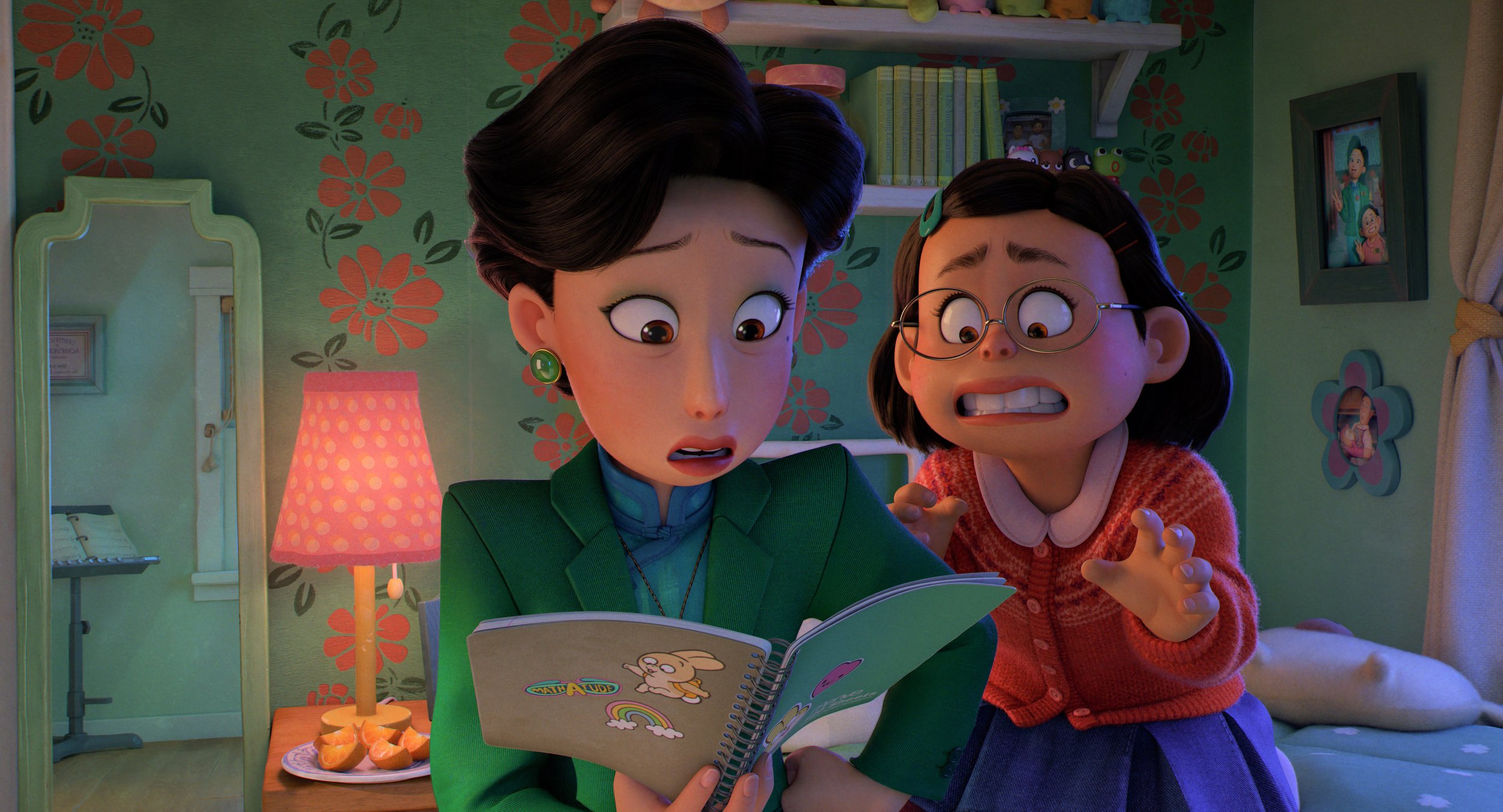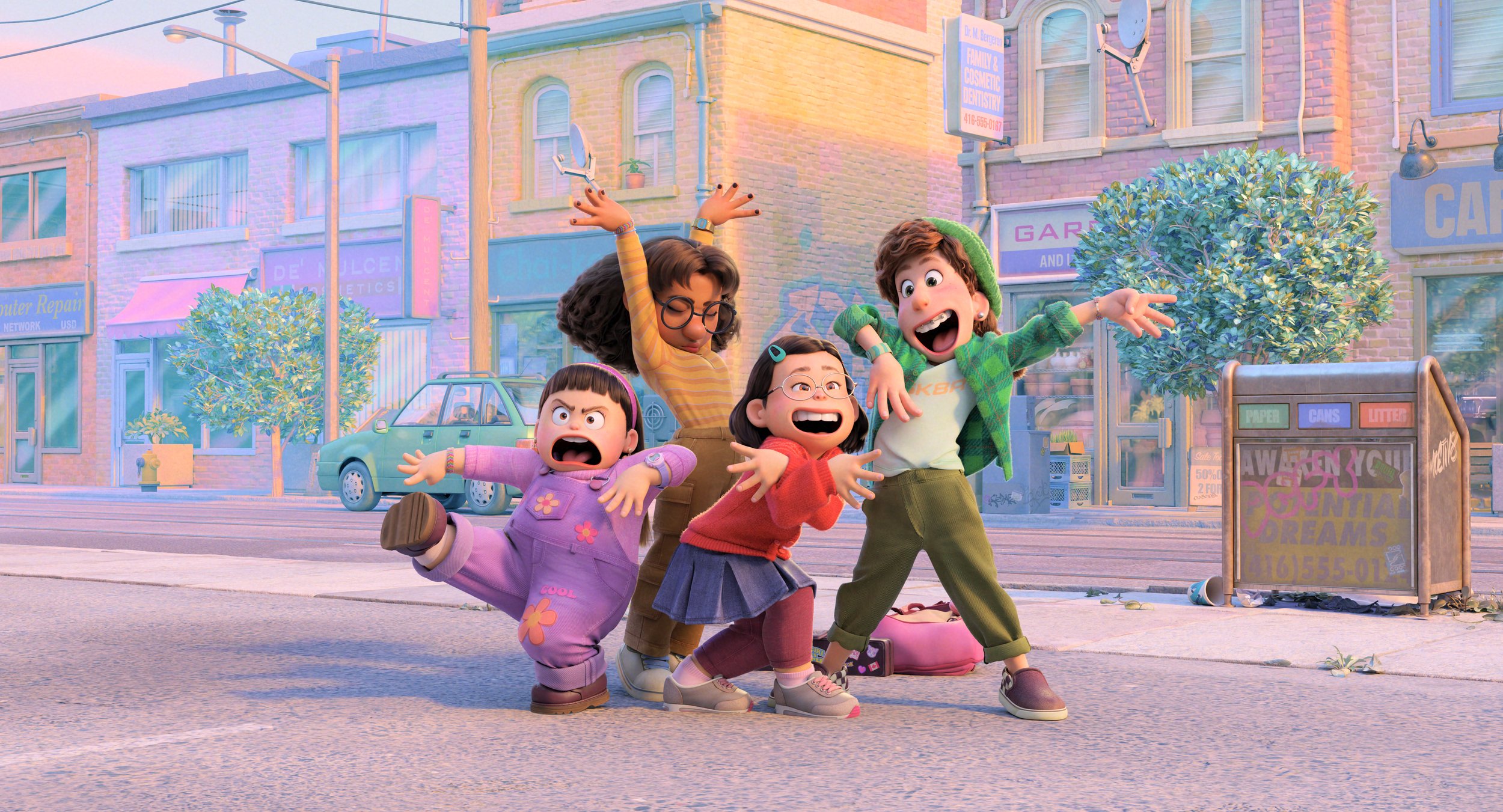MOVIE REVIEW: Turning Red
TURNING RED— 4 STARS
Maybe it’s not to a full Archer level of a requiring a “Phrasing!” warning, but it’s awfully hard to title a puberty-centered movie Turning Red and not evoke a rubbed chin, a furrowed brow, a giggle or two, and a pair of squinted eyes. How many suggestive ways beyond the color a face turns when blushing do you want to go? Pick your menstruation euphemism of choice and ask yourself if Disney would really have the courage to go there.
LESSON #1: RED IS A LUCKY COLOR– The spicy answer is they do, but in the most loveable and disinfected ways. The good storytellers at Pixar take all the possible cringeworthy “red” jokes and mask them through creatively conceived metaphors that soften the obligatory embarrassment with heart, humor, and courage. After all, to the Chinese culture on display in Turning Red, the potentially frightening shade of crimson counts as a lucky color of vitality, success, and happiness. Leave it to the ever-reliable Pixar to swim freely within that intrinsic good fortune as they so often do.
Turning Red takes place in Toronto, Ontario, Canada in the year 2002, the heart of the “boy band” era and long before social media would come along. Narrating her own introduction with all the juvenile pluck in the world is Meilin Lee (voiced by Rosalie Chiang). She is a teenaged Chinese-Canadian A-student with a fun-loving attitude fueled one on side by a trio of besties, Miriam, Oriya, and Abby, and squelched on the other by a traditional life of discipline and devotion orchestrated by her strict mother Ming (voiced by Killing Eve star and Canadian native Sandra Oh). No “Asian Fs” are allowed in that house among many other things.
Mei would love nothing more than to fully embrace the fads and freedoms of her peers, especially the big upcoming “4 Town” concert coming to the SkyDome. Alas, familial duties bind her to working closely beside her mother managing the local temple. No amount of sheltered protection from Ming, however, can prevent an inherited family hex (touted more as an “inconvenience” than a blessing by her elders) that manifests at adolescence from taking over her only child.
Anytime Meilin cannot control strong emotional urges, she transforms into an ogre-sized red panda. And there, folks, is the rub of the film’s title far from tampons or flushed cheeks. She can revert back to her human form, but only with calmness. There’s no customary villain in Turning Red, per se, but the plot threat is centered on a lunar window for a corrective spiritual ceremony to cure the transformations.
LESSON #2: HONORING YOUR PARENTS VERSUS HONORING YOURSELF– This predicament surges many hot button triggers for a mortified Meilin, be them boys, bodily changes, or emotional swings. It also increases a gap of ideologies between the budding young lady and her smothering and antiquated mother. The constant helicopter parent stress from Ming is worse than any external social pitfall for Mei. Likewise, Ming, blinded by her work to preordain her daughter’s success, has not made the effort to learn her daughter’s true self and ambitions. The eventual clash and explosion of truths that’s coming between mother and daughter, where compromise seems unattainable, drives Turning Red more than its calendar march to the crucial day where the ancient ceremony coincidentally matches the night of the big concert.
LESSON #3:ACCEPT AND EMBRACE ALL LABELS– Much of Turning Red is spent orbiting Meilin’s social scene. Teenage angst, even before the cyber-powered extra layers of communication and connection present today, has always been an unbearably difficult time period of identity and adjustment often pulverized by name-calling and bullying. The growing sense of independence felt and granted to teens leads them, more often than not, on a search to find their niche or people of comfort. Used to great effect in the film, Mei has three fantastic friends in Turning Red who unconditionally love their mutual weirdness and shortcomings. Their shared pride for every label is a very encouraging development to see.
LESSON #4: HEY KIDS, LET’S TALK ABOUT PUBERTY– How often in coming-of-age stories, both animated and live-action, is the awkwardness of puberty used for cheap gags or as an unsightly smear of ugliness to reduce characters to punchlines? Contrary to those teen movie tropes, Turning Red allows young characters with literal and figurative inner beasts true beauty amid all of their messy exterior and interior traits. The temporary flaws that attract public shame evolve into traits of celebrated strength in this movie, which makes for a heartwarming victory of confidence and maturity.
That said, Turning Red broaches perceived taboos viewers need to be ready to absorb or explain. This is not a cutesy movie to throw on to babysit little elementary-aged kids unsupervised. Be ready for questions. Turning Red is meant to be an open table experience for parents and their pre-teen/teen children and should be treated that way. This is a rare case where a PG-13 rating wouldn’t have been the worst scarlet letter in the world and could have helped solidify the importance of its substance to unassuming audiences expecting some rainbow romp. All of the brimming discussion moments are worthwhile.
Turning Red was written and directed by Animated Short Film Oscar winner Domee Shi (Bao) partnering with Windham-Campbell Literature Prize-winning playwright Julie Cho. In conceiving and crafting this journey thick with symbolism, they are expressing cultural viewpoints with confident mouthpieces and vibrant digital paint brushes (almost emulating an Aardman style of curves). They represent many welcome female and ethnic firsts for Pixar while still matching the studio’s tried-and-true ability to create approachable, entertaining, and poignant analogies for hefty topics. Turning Red might not have the fullest “Pixar Punch” to destroy hearts and tear ducts, but the cartoonish meets the profound in an altogether wonderful fashion.
LOGO DESIGNED BY MEENTS ILLUSTRATED (#1022)







